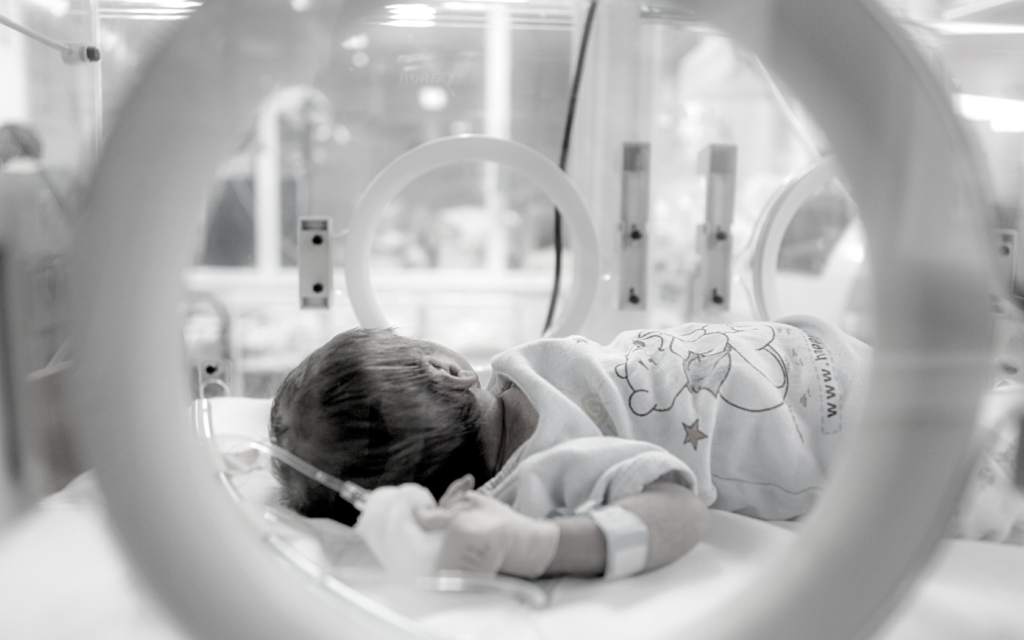For some babies, the use of a cooling blanket is the chance for a better life. Unfortunately some infants can develop severe oxygen deficiency during the birthing process. This can lead to serious, lifelong disabilities. For some babies, oxygen deprivation during birth can have even more unfortunate results. Recent studies show cooling therapy can help in this situation. The use of cooling blankets for newborns can help reduce the damage of brain injuries in infants.
Timing is absolutely critical when it comes using a cooling blanket on newborns. When used correctly, and on time, results can be positive and life saving.

The Need For Cooling Therapy
Hypoxic-Ischemic Encephalopathy (HIE) occurs in approximate 3-20 per 1000 live births. For preterm babies, HIE is far more prevalent. According to UFHealth, HIE occurs in approximately 60% of premature live births. Neonatal HIE is brain dysfunction which occurs after a baby suffers from oxygen deprivation during labor and/or delivery.
For decades, brain injury from HIE was thought to be irreversible, and unpreventable. Only recently was it discovered that inducing hypothermia in babies can help their bodies fight off oxygen-deprivation injuries.but it had to be safe, monitored, and carefully administered. Cue the cooling blanket for newborns.
The Newborn Cooling Blanket Is A Modern Day Innovation
Though it may seem very ordinary, a cooling blanket for newborns can deliver extraordinary results. Here’s how it works. Essentially it’s a waterproof blanket with cool water circulating inside. When a baby is placed on a cooling blanket, the body temperature gradually decreases to 91-92 degrees Fahrenheit. In order for the treatment to work correctly, a newborn’s temperature should remain at 91/92 for 72 hours before they can begin warming it again.
This cooling forces the body to slow down the metabolic process. And therein lies the key. The decreased metabolic process induced by the cooling blanket helps decrease the severity of brain injury caused by HIE.
Promising Results Delivered Via A Cooling Blanket
A 2005 NIH-led study determined a cooling blanket delivered to newborns with birth asphyxia helped reduce disability and even the risk of death.
The findings of the study showed that babies given cooling treatment:
- Had lower death rates
- Did not display increased rates of severe disability like those undergoing usual care
- Displayed higher IQ scores than those undergoing usual care
Cooling Blanket For Newborns Has Criteria
Many lives have been improved because of a newborn cooling blanket. Lives that, because of HIE, may have required lifetime medical care. And injuries that may have resulted in conditions like cerebral palsy.
In order for cooling blankets to be successful in newborns, certain criteria must be met.
Offered almost immediately after birth.
Cooling treatment will only work if a baby suffered hypoxic-ischemic encephalopathy in less than 6 hours. Babies older than six hours may not experience favorable outcomes.
Continuous monitoring.
The state of hypothermia in babies can be dangerous. That is why newborns with cooling blankets must be supervised at all times. Most babies will be intubated and on a ventilator during treatment. Some are given medication for possible seizure episodes. All are given fluids via IV or umbilical catheter.
Cooling Blanket Saves Newborn In Boston
In 2008, a 38-week pregnant woman walked into the hospital to be induced due to high blood pressure. When the doctor held up Wendy Francis’s son, he wasn’t crying. “He was silent…not breathing.”
The baby transferred to Boston Children’s Hospital to be administered cooling therapy – a treatment not offered at the hospital baby was born. Doctors told Wendy her son suffered HIE. And the possible complications from that could be severe: death, cerebral palsy, vision impairment, cognitive disability, motor skill delays, and more. Doctors induced hypothermia using a cooling blanket.
The result? Wendy’s son was able to recover and grew to be a child without any cognitive delays. Read the full story here.

The Connection Between HIE, Cooling Blankets, And Malpractice
While some cases of oxygen deprivation are impossible to prevent, some occur solely because of a doctor’s negligence. It is also a doctor’s responsibility to recognize HIE and quickly begin treatment.
If you believe your child suffered oxygen deprivation and was not offered treatment using a cooling blanket within the allotted time, you may have a case of medical malpractice. We understand how the lack of treatment can cause you and your child physical and emotional trauma. That’s why we offer a free consultation where we answer questions you may have. Please contact us to learn what options you may have and how you can hold a negligent doctor accountable.




